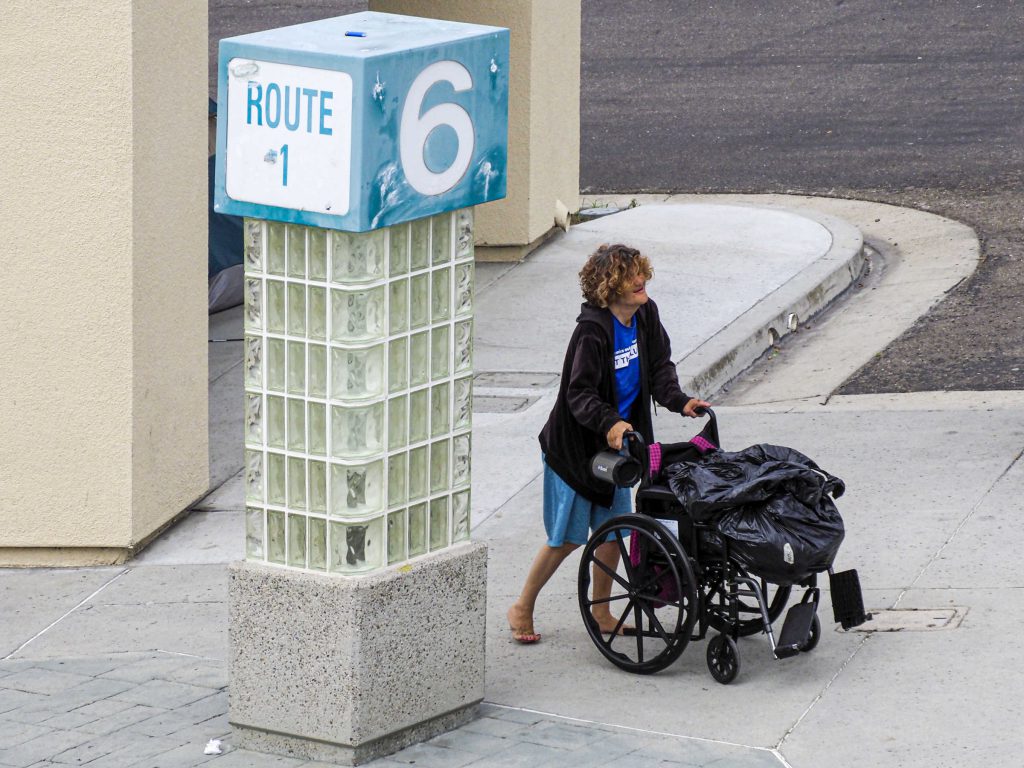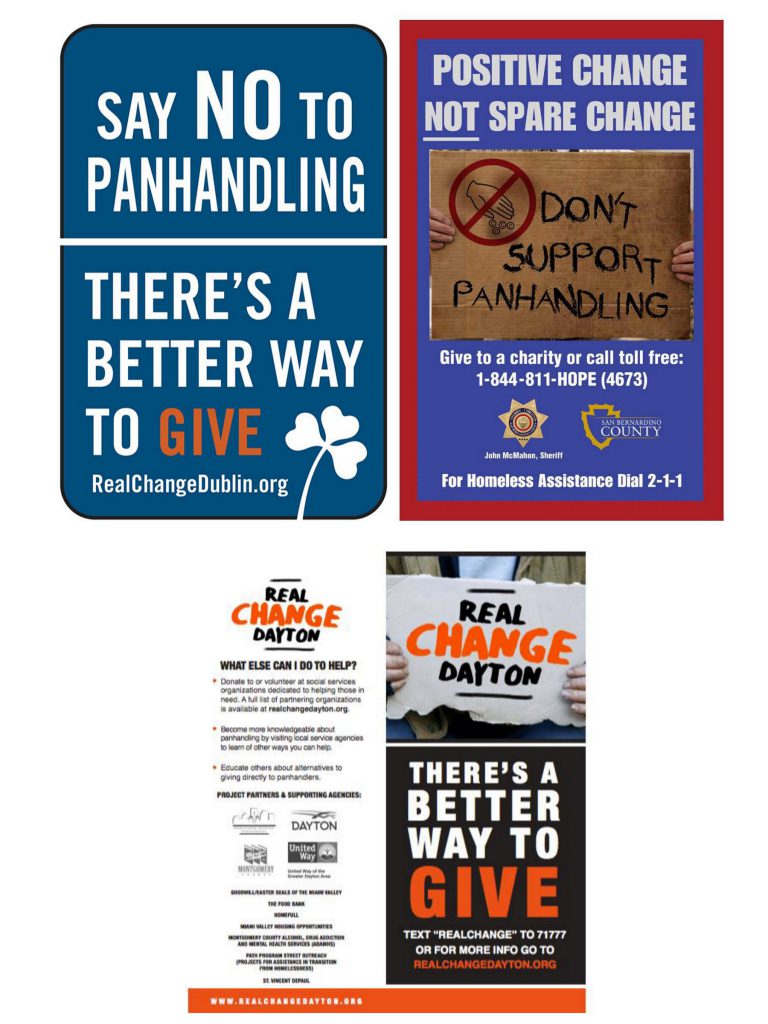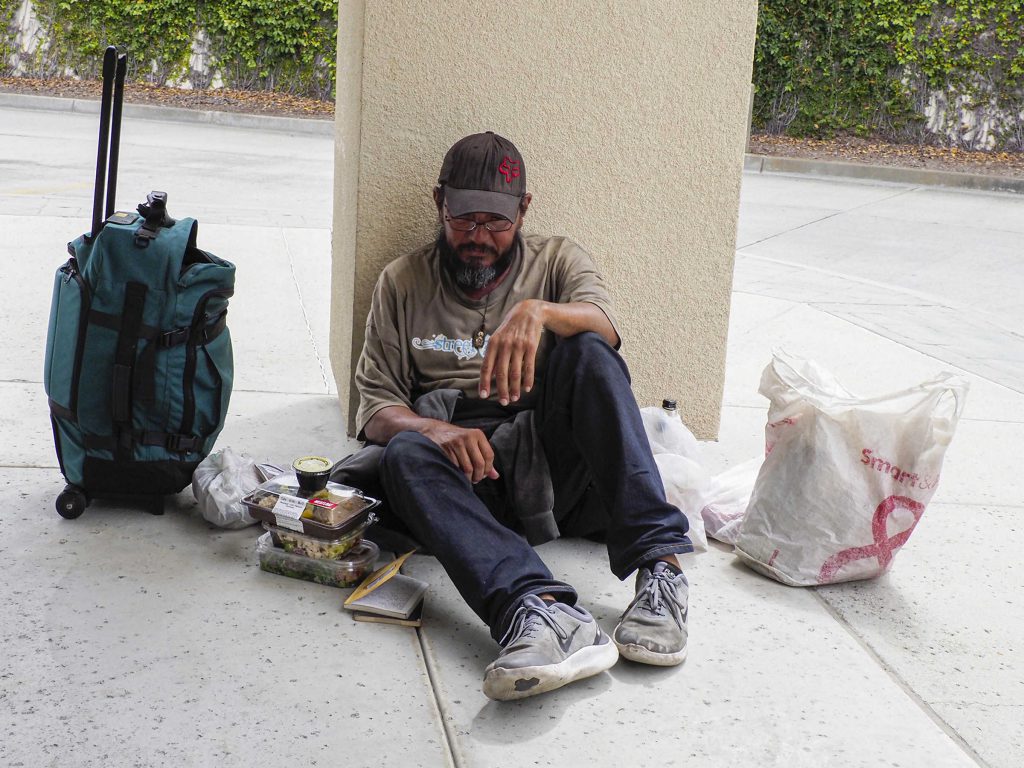
— Photo by Lawrence Sherwin ©
Homelessness was again a hot topic this week at a meeting of the group tasked with studying the issue. While they covered several items, the most heated discussion focused on panhandling and possible signage discouraging residents giving money.
The staff report explained residents’ concern over an increased number of people at traffic intersections requesting money.
“Concerns have ranged from median plant trampling, safety of persons being so close to cars, and what the money is used for, among others,” the report reads.
NBPD homeless liaison officer Tony Yim confirmed that standing in the median is illegal and they have cited people for that specific violation. However, as it goes through the court system it often results in no fine. That’s anecdotal information, Yim emphasized.
Mayor Pro Tem Will O’Neill encouraged the residents to reach out to the Orange County District Attorney’s office if they feel they want stricter enforcement on the issue.
“A lot of folks are particularly concerned about panhandling in our city,” O’Neill said. “I’ve gotten a lot of questions about, ‘Can you make that illegal?’ The answer is ‘No, we can’t.’”
Federal court has determined that panhandling is protected by the first amendment, O’Neill explained.
Considering the legal blockade from actually creating an ordinance, O’Neill noted that the question becomes “What is a good way of approaching it?”
“Cities across the country have addressed this First Amendment prohibition by instead using speech of its own to discourage people from donating money directly to people panhandling within their jurisdiction,” the staff report reads. “Few, though, have simply discouraged giving. Instead, most have concurrently encouraged donations to charities with the specific mission of helping homelessness individuals.”

— Art courtesy city of Newport Beach
The idea is to instead encourage donating to specific nonprofits that help the cause.
Numerous examples of these signage programs exist, including from Dublin, San Bernardino County, and Dayton, Ohio.
Council will consider the signage on Tuesday. They’ll discuss if it’s a good idea, if they want to move forward with it, and, if so, what information would be on the signs, O’Neill explained. He encouraged residents to email the City Council about their opinion on the issue.
Task Force member Helen Cameron acknowledged how complicated the issue is and suggested they slow the process down to ensure they do it appropriately.
“This is a very difficult issue,” for communities, Cameron said. “It’s a dilemma for us.”
They can be thoughtful about the signage, and whether or not it would help. They first need to have a better understanding about what panhandling is in Newport Beach, Cameron commented. They should look into the reasoning behind the handful of people that panhandle in the city and why they choose those locations, she said, eliciting some chuckles and scoffs from the audience.
She doesn’t want to put energy into signage just yet.
“I want our first success to be housing,” Cameron said.
One speaker accused the Committee members of being biased.
“Clearly, the Council seems to have surrounded itself with a bunch of homeless advocates…There is a bit of slant of what’s going on here,” claimed another public speaker. “I was wondering if we could increase the committee perhaps with some homeowners and tax payers.”

— Photo by Lawrence Sherwin ©
All the committee members are taxpayers and Newport Beach residents, Snow confirmed.
Several public speakers said they were approached “aggressively” by panhandlers. It’s a public safety issue, a few agreed.
There is one panhandler in Newport Center who has four or five others “working for him,” said one speaker, with several audience members audibly agreeing. He makes a lot of money, the speaker claimed.
“It’s a choice that they’re making,” said one commenter.
Committee member David Snow said he’s heard comments that the panhandlers take in a “great deal of money.” An opinion that several speakers echoed during public comment.
“Based on the research I’ve done in Orange County, that’s not the case at all,” Snow commented.
Based on about 250 interviews with homeless individuals across the county, the median income for those who live on the street and in shelters is about $500 every month, Snow pointed out.
Another resident pointed out that many people are thrown into poverty because of unexpected medical bills, others lost their jobs, or have overwhelming circumstances.
“I personally know outstanding people who wound up homeless through nothing more than bad luck,” he said.
They hear stories and rumors, but they can’t take a unique encounter or situation and generalize it doesn’t work, he explained. The analysis
The committee is looking at fact-based solutions and doing “excellent” work, he added.
“They are members of our community,” he noted. “It’s up to all of us to look out for them and try and come up with feasible solutions.”




